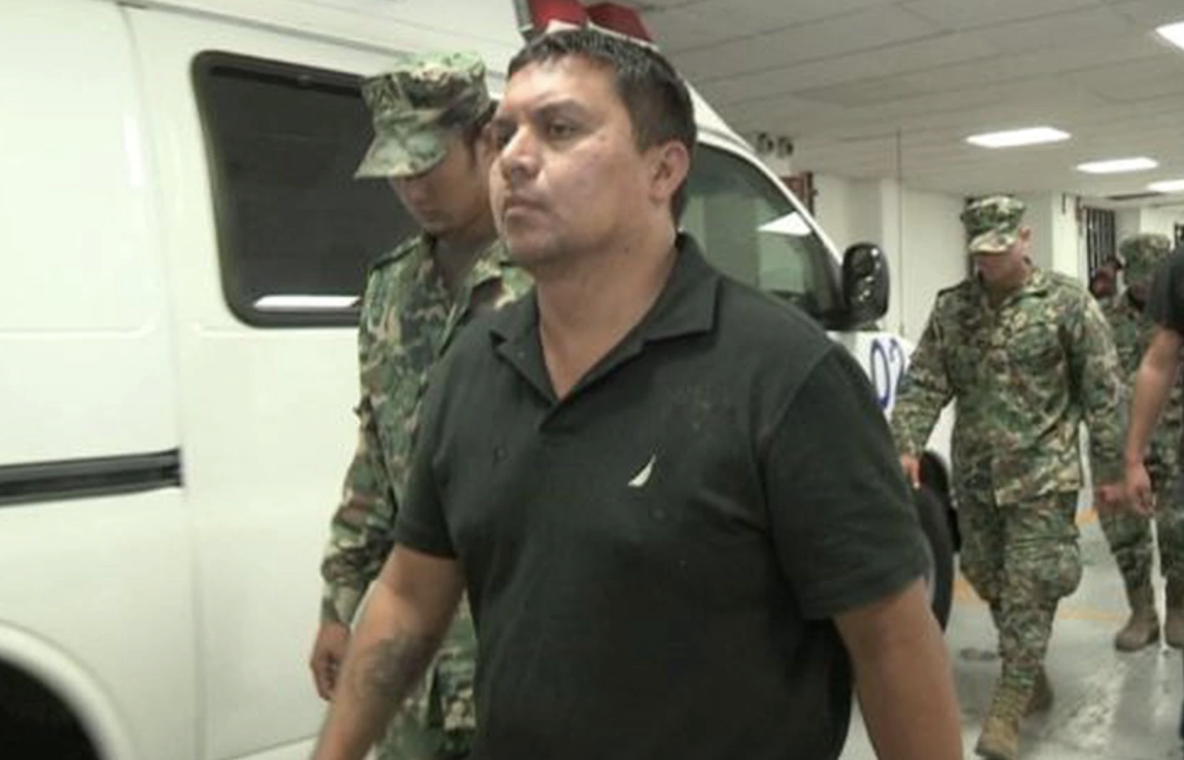During the second consecutive late night of bacchanalian revelry in Matamoros, Mark Kilroy disappeared after his companion excused himself to piss behind cover in an alleyway on 14 March 1989. Kilroy was a 21-year-old frat boy from the University of Texas at Austin who made the pilgrimage to the spring break institution of South Padre Island with some friends. Kilroy and his buddies spent the days cavorting with thousands of fellow college students at bikini contests set against South Padre's inconstantly blue-green or brown waters, and the nights imbibing with throngs of their peers in Matamoros's affordable and permissive tourist bars.


Kilroy's friends spent several hours looking for him without success before eventually returning to their hotel in South Padre. When Mark was still unaccounted for the next morning, his friends reported him missing to the police.
The police began to suspect foul play after investigators were unable to locate Mark in the jails and hospitals in Matamoros. With the pressure on to resolve the disappearance of a white college student, investigators in Tamaulipas initially suggested that Kilroy must have disappeared in Brownsville on the U.S. side rather than Matamoros, a claim that Kilroy's companions disputed.
Without many leads to go on, the police turned to an unconventional investigative technique to probe Kilroy's friends' intoxicated recollection of what had happened. According to The New York Times:
Under hypnosis, Mr. Huddleston [Mark Kilroy's friend] said he and Mr. Kilroy passed a man wearing a blue plaid shirt who called out and motioned to Mr. Kilroy. According to a friend of the Kilroy family, Sheila Hughes, Mr. Huddleston said under hypnosis that he went to a nearby bathroom and that Mr. Kilroy was gone when he returned.
Investigators placed Mr. Huddleston under hypnosis shortly after Mr. Kilroy's disappearance to determine whether he could remember any details that might help solve the case.
According to the U.S. Department of Justice, while the use of hypnosis can help investigators in "certain limited cases," hypnosis as an investigative technique "is subject to serious objections." Further, "[t]he information obtained from a person while in a hypnotic trance cannot be assumed to be accurate. Therefore, any information obtained by the use of hypnosis must be thoroughly checked as to its ultimate accuracy and corroborated. It would therefore be advisable to first consult with a board-certified forensic psychologist / psychiatrist to ascertain if the matter in question is appropriate for the application of forensic hypnosis."

Whether or not investigators consulted with a credentialed professional is unclear, but with a composite to work from, the investigation in Mexico began to pick up momentum as the political pressure to crack the case was building. State and national Texas political figures got involved, cash rewards were offered and a segment ran on the America's Most Wanted television show on 26 March soliciting the public's help with the case.
Other leads started coming in. According to a June 1989 story by Texas Monthly:
A psychic had reported a vision in which Kilroy’s body appeared alongside what looked like a witch’s caldron. A satanist in Brownsville had confessed to murdering Kilroy and burying his body on the beach — though under questioning, he recanted.
A few days after the America's Most Wanted segment aired, the investigation on the Mexican side caught a lucky break on 1 April 1989 when a subject supposedly ran through a routine police checkpoint on the highway between Matamoros and Reynosa. Historically, the police have often used checkpoints to extort motorists and direct and tax the flow of contraband. According to the cops' account, the subject drove through the roadblock without stopping or even slowing down. The way the officers described it, it was as if the subject was totally devoid of fear of the police or concern for his safety—"as if he believed himself to be invisible and bulletproof," the police reasoned.

There are conflicting versions about what happened next, with some reports claiming that Serafín Hernandez was arrested for failing to stop at the checkpoint and possession of marijuana, and others claiming that the cops tailed the man in an unmarked vehicle to a hacienda owned by his uncle's family in the Santa Elena community. The police claimed they pulled off the road a short distance away and observed the subject attend to some business for about half an hour before turning around and heading back to Matamoros. After the coast was clear, the police descended on the property and poked around finding what they would claim was occult paraphernalia and marijuana in either trace amounts or 30 kilos depending on the *source. (*It's possible that some versions described the personal effects found in Serafín's vehicle and the other describing what investigators found at the ranch).
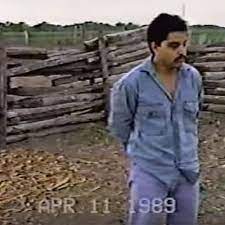
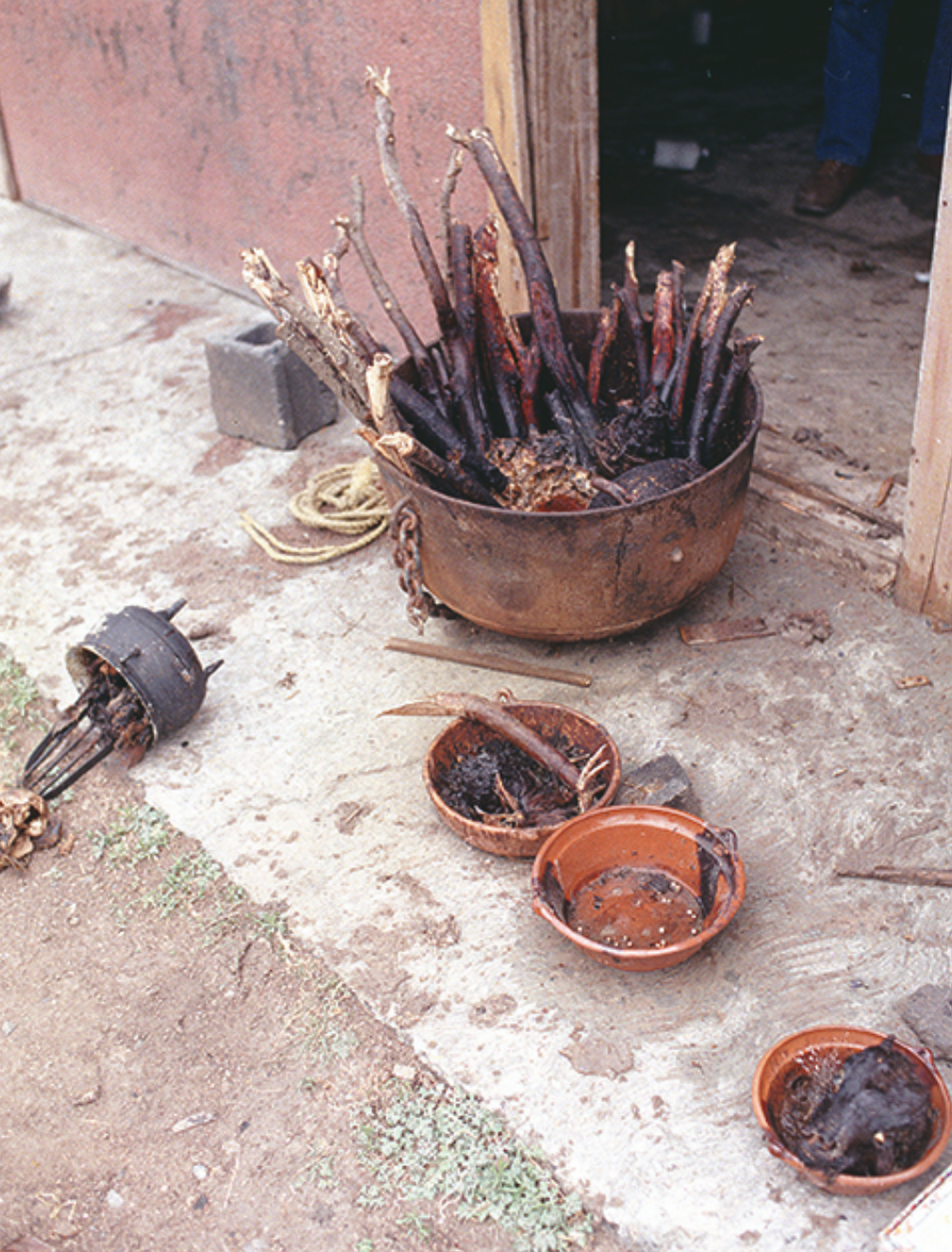
According to what is technically considered reporting in Texas Monthly, the initial search of the property discovered that something was afoot—something EVIL.
To the unpracticed eye of a norteamericano, it appeared to be an ordinary storage shed with some melted candles, cigar butts, and empty bottles on the floor and some greasy caldrons in the yard. But the Mexican cops saw something else. They saw a devil’s temple, a place where black magic had been practiced. When they reported this astonishing news to their comandante, Juan Benitez Ayala, the investigation came to a screeching halt — much to the distress of American lawmen who believed that the smugglers knew something about the disappearance of Mark Kilroy. But Benitez was adamant: The search could not resume until the black magic had been neutralized.
According to Texas Monthly, the investigation was put on hold until a shaman could be brought in to ameliorate the vibes and for no other reasons.
Other versions mentioned that in the interim, the police determined it would be prudent to develop more evidence. The cops claimed they gathered evidence about the activities at the ranch using informants (typically known, witting criminals motivated transactionally and / or coercively into cooperating) to ask around about the ranch. Satisfied with the quality and integrity of their informants' findings and the evidence recovered at the Santa Elena property, the police arrested Serafín, his uncle Elio, two alleged cult members and a groundskeeper. The cops hauled everyone off to jail and interrogated the caretaker, who identified Kilroy from a photo. "Yeah," the groundskeeper supposedly told the police. "I saw him."
But police interrogations in Mexico are not emotional Q&A sessions in a small room like on Law & Order, a fact that was apparently ignored by all of the english-speaking press and U.S. investigators.
While Mexico has put considerable effort into police reforms and initiatives to professionalize and train police since then, a 2016 study found that unlawful coercion and torture, including threats of false charges, nudity / humiliation and beatings, were used in at least 70% of common jurisdiction cases and 73% of federal jurisdiction cases, which may even be an undercount. Although data about the incidence of torture as an investigative technique in 1989 may be scarce, torture methods including electrocution, waterboarding, asphyxiation, rape and sodomy have been reported throughout Mexico's recent history.
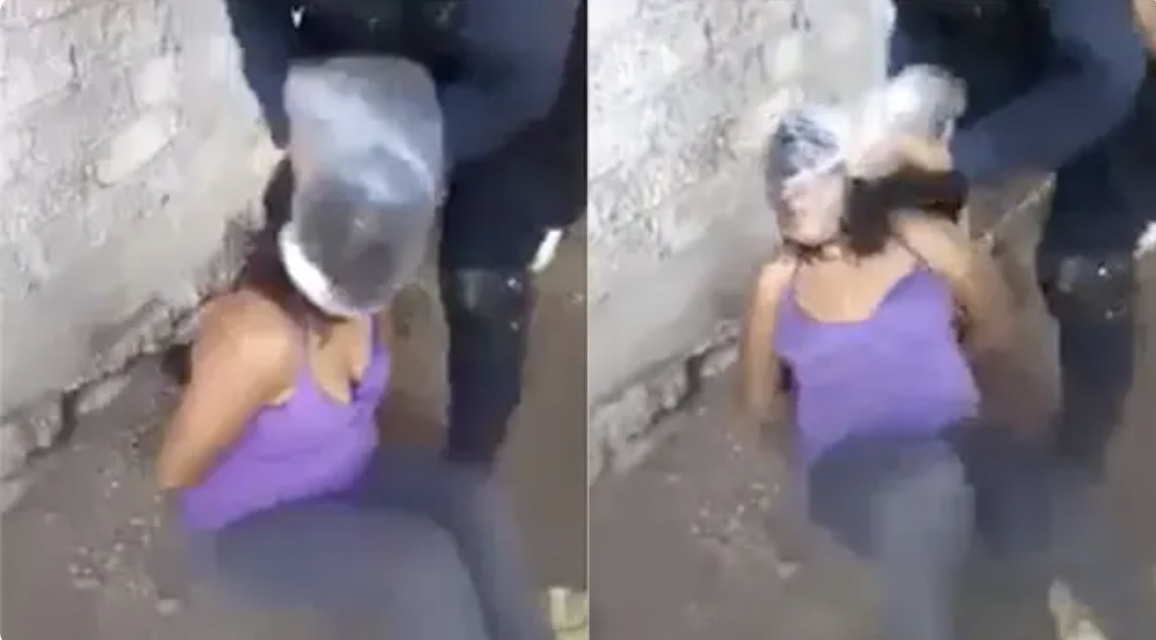
In custody, an interrogation of Serafín Hernandez and the others supposedly extracted confessions admitting participation in the kidnapping and what was portrayed by investigators as the ritualistic murder of Mark Kilroy. According to reporting in Texas Monthly:
In an interrogation room of the Matamoros jail, Elio Hernandez Rivera, Serafin Hernandez Garcia, and two other suspects who had been arrested at the ranch confessed to kidnapping Kilroy and witnessing his ritual sacrifice. Serafin told investigators that he had buried Kilroy, and he led the way to Kilroy’s grave, which was marked by a piece of wire sticking out of the ground. The other end of the wire had been attached to Kilroy’s spinal column so that when his body decomposed members of the cult could pull out the vertebrae to make into a necklace.
A medical expert consulted by narco.news said that removing a spinal column from a decomposed body with a wire was probably physically impossible. "The spine is really critical so it’s attached to a lot of things and isn’t easy to remove. It’s not Mortal Kombat."
Nevertheless, the media dutifully reported the sensational claims.
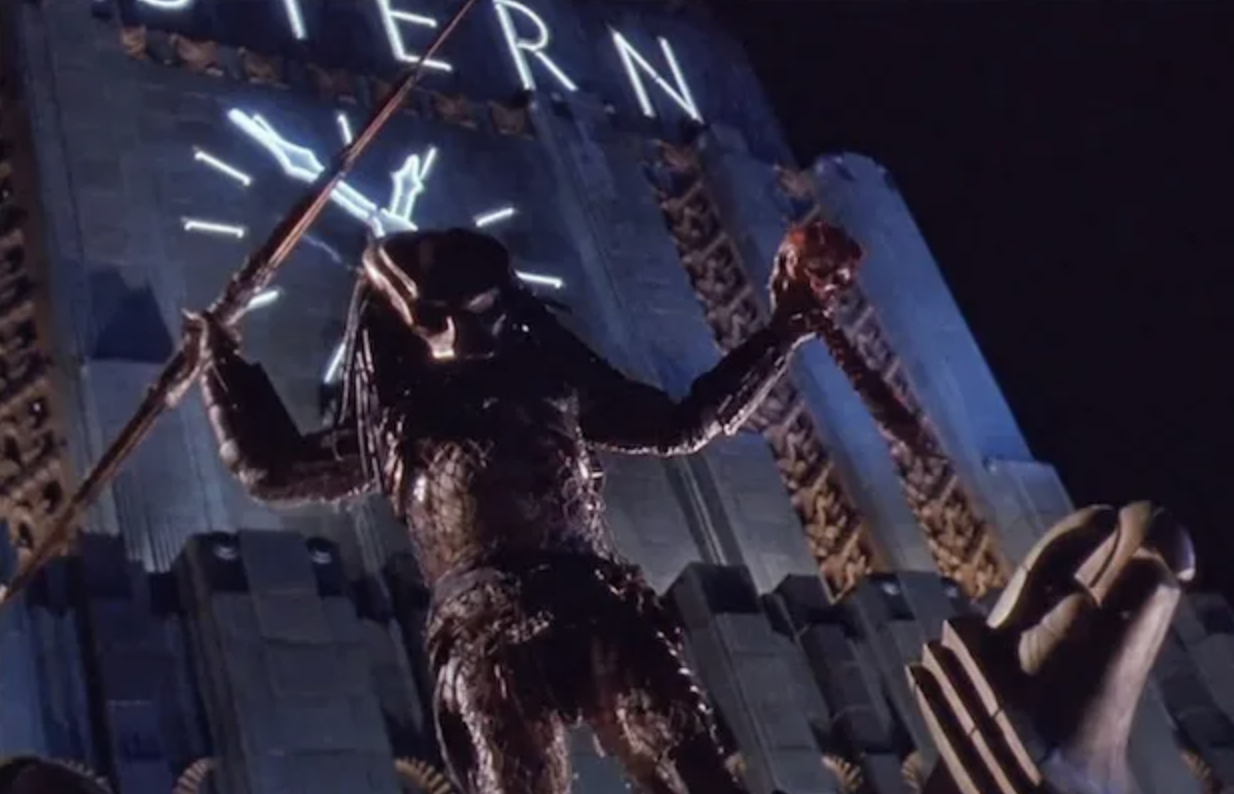
In an interview, Serafín Hernandez claimed that he had nothing to do with any kidnappings, murders or drug trafficking as the investigators alleged. According to Serafín, when he was shown a photograph of Mark Kilroy, he told police that he recognized him from media coverage of the disappearance but said his statements were misrepresented by the investigators. Serafín claimed that he had been beaten by Mexican and American officials and even had a gun pointed at his head by an American investigator. At the trial, Serafín said he was threatened and given strict instructions not to speak in english at all during the proceedings—or else.
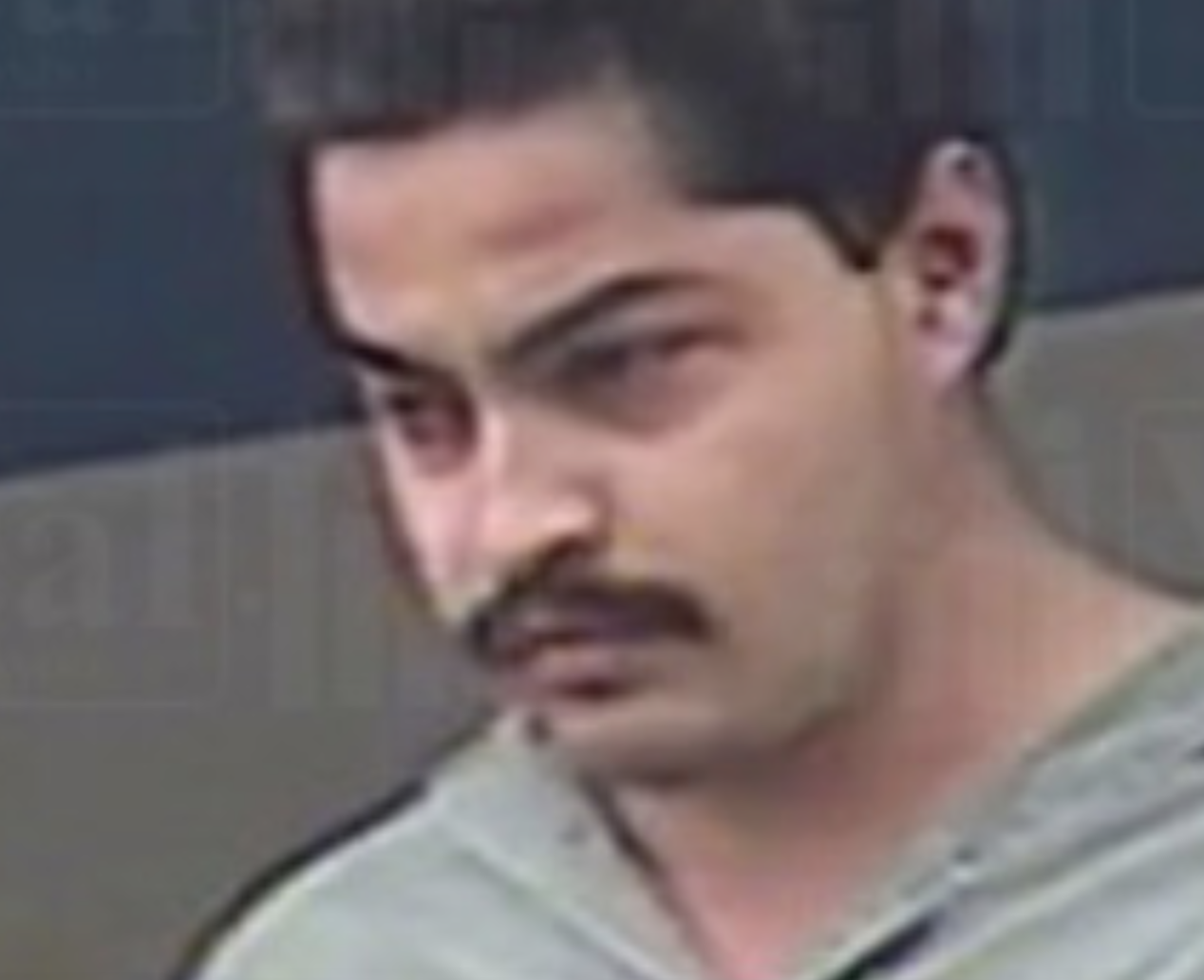
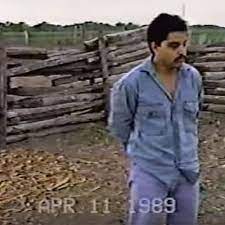
The police reportedly found a horrifying scene at Rancho Santa Elena which has since become so routine that it rarely makes it beyond the national news in Mexico. According to a June 1989 story in Rolling Stone:
Buried in several shallow graves in the immediate area were the remains of twelve males, including the mutilated body of Mark Kilroy. Some of the victims had been slashed with knives, others shot. At least one had been burned, another hanged. Many had been savagely disfigured, their hearts ripped out, their ears, eyes and testicles removed. One had been decapitated. Eventually three more bodies would be found in the area, bringing the count of corpses to fifteen.
In the years since then, as the violence from the drug war spiraled into what it is today, reports of every devious and sadistic method of torture, mutilation and execution imaginable have come out of the shadows and into public view. While shocking by 1989 standards, the violence used by the mafias that have operated in Matamoros since the prohibition era has always been brutal, but certainly not something the American public was as aware of or on the scale it eventually grew into.
If Elio Hernandez or anyone else were involved in the drug trade, the discovery of multiple bodies with signs of mutilation and torture would not be surprising in the least.
The investigators claimed that the killings at Rancho Santa Elena were the handiwork of a drug-trafficking "satanic cult" led by a Cuban-American from Miami named Adolfo Constanzo. Allegedly known as "El Padrino" ("The Godfather") to his followers, Constanzo was described as a handsome and charismatic practitioner of Palo Mayombe, a folk religious tradition from the Caribbean with roots tracing back to African slaves and some similarities to Santería and Voodou. Unlike Santería, Palo Mayombe has been described by some scholars as unwelcoming to homosexuals. Curiously, Constanzo was reportedly a "known homosexual" said to frequent CDMX's Zona Rosa (Pink Zone) where the gay community socialized. Constanzo supposedly hooked up with the Cártel del Golfo providing his services as a spiritual guru for the drug traffickers while supposedly getting into the game himself.
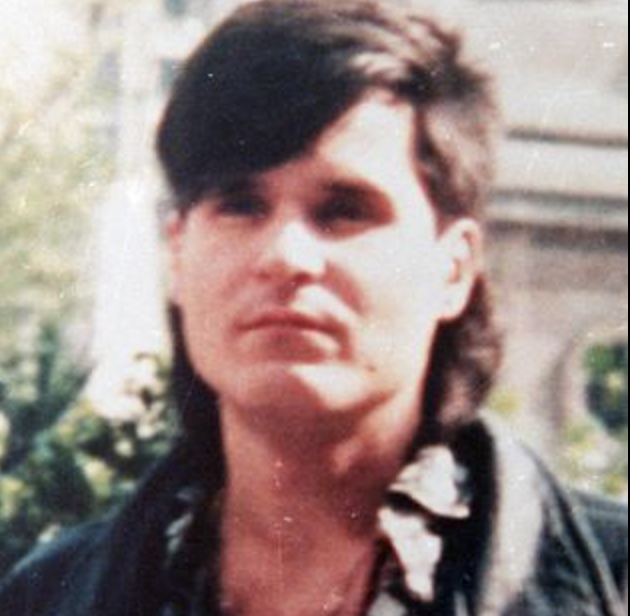
Neither the fact that Constanzo was a practitioner of Palo Mayombe, nor the fact that people from every class strata have been known to seek spiritual guidance and good luck from folk spiritual gurus, is disputed. But while the practices of Palo traditions have historically included sacrificing chickens and even making charms using human skeletal parts occasionally taken from graves, human sacrifice is not a practice associated with the tradition whatsoever.
But according to investigators, the detainees confessed that Constanzo led a cult of adherents who began practicing human sacrifice to grant them supernatural powers and divine protection. Rolling Stone and others reported that police claimed the suspects showed no sign of remorse during their confessions and informed them that Kilroy was kidnapped because Constanzo ordered the sacrifice of a white student. The sacrifice, the investigators claimed, was promised to protect the marijuana smuggling operation at Rancho Santa Elena.
To reiterate, the police claimed that Mark Kilroy had been kidnapped while barhopping on spring break because an evil, satanic narco-cult leader demanded the blood of a white college student, which the cult believed would help their drug smuggling business avoid getting bothered by the cops.
The idea that any profit-motivated criminal enterprise that counts on flying below the radar for their livelihoods, who is certainly aware of the finer points of when and how violence can be used without drawing unwanted attention, would sign off on kidnapping and murdering a white university student from the U.S. believing that it would protect them is utterly preposterous. Nevertheless, that's exactly what was reported by The New York Times, The Washington Post, The Los Angeles Times and The Associated Press, among others.

The papers of record also reported the investigators' claim that Constanzo was assisted at every step by a 24-year-old woman named Sara Aldrete. Known as "the witch" of the cult, a detail dutifully repeated by every major American publication, Sara was alleged to have helped with recruiting and indoctrinating followers for the cult. According to reporting (as always based on police accounts of confessions extracted through torture), "satanic cult witch" and "devil's concubine" Sara would brain-wash recruits by screening the 1987 flop The Believers, described by Texas Monthly as a movie about "a father and his son […] caught in a web of black magic," and by Roger Ebert as "an awesomely silly, tasteless, and half-witted movie."
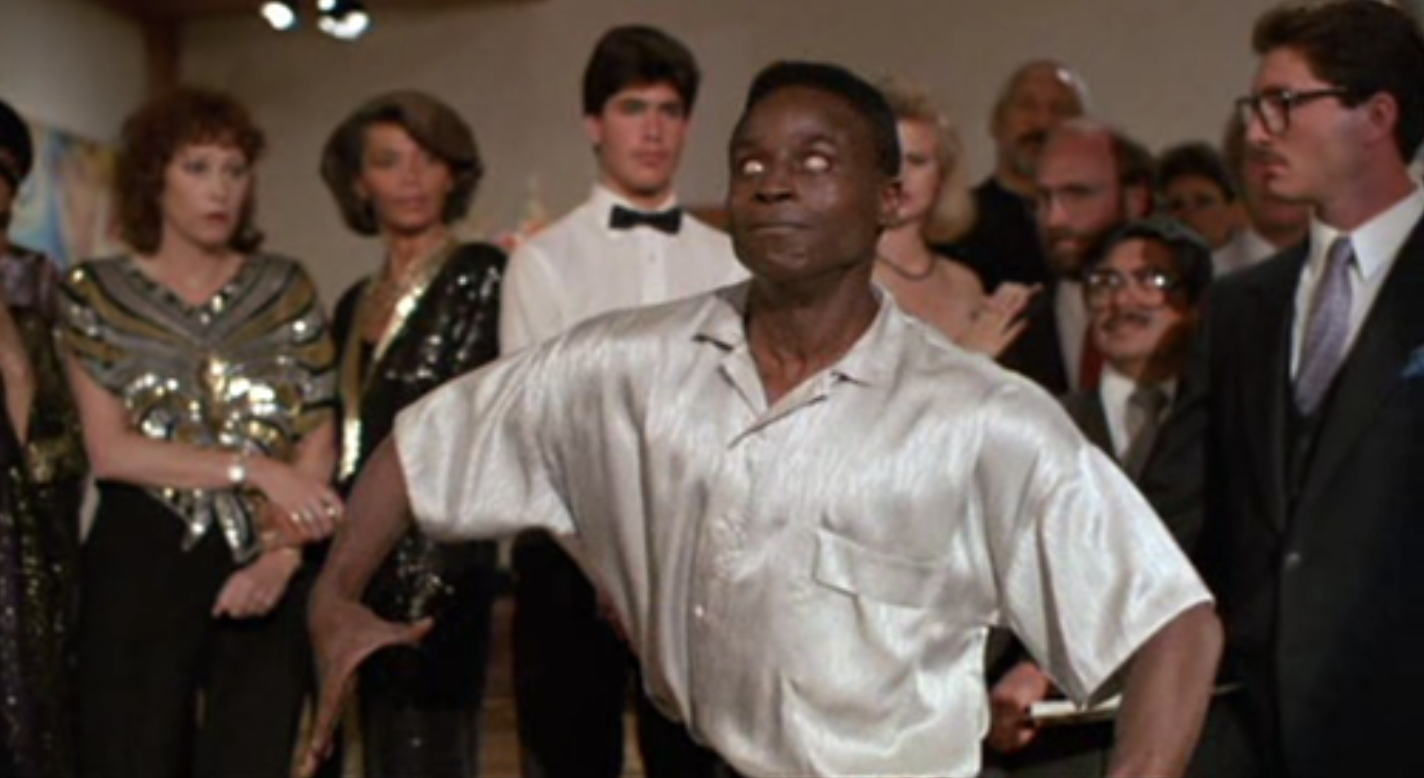
According to reporting in Rolling Stone:
Several times during their interrogation, the suspects made references to the 1987 horror film The Believers. Starring Martin Sheen and directed by John Schlesinger, the film is about a cult in New York City that conducts human sacrifices to gain money and power. Elio Hernandez Rivera and the others said that Sara Aldrete had organized screenings of the movie and that they had watched it 'many times.'
It's worth mentioning that the protagonist kills the evil cult members and rescues his family at the end of the movie. Nevertheless, the magical power of cinema was plausible enough for the American press, who reported the investigators' claims even before the defendants had their day in court.
To many of people that knew her, the accusations made about Sara Aldrete, a well-liked and outgoing bilingual student studying physical education at the Texas Southernmost College in Brownsville, were unbelievable. According to reporting in Rolling Stone:
It seemed impossible that the bright, industrious girl they knew could be involved with an evil gang of murderous drug dealers. 'We never suspected anything,' says one student. 'It seemed incredible.' To this day there are many people at the school who think that Aldrete is innocent or, at worst, an unfortunate victim of circumstance.
The more likely explanation, however, is that Aldrete was leading a double life of mind-boggling cultural contradiction. One life took place in the urban world of English, sports and academic achievement; the other in the rural terra incognita of Santa Elena, drugs and black magic.
How the suggestion that Sara was pulling the wool over everyone's eyes was more plausible than firsthand testimony from people that knew her is yet another mystery in this saga. That seems like something the media ought to look at a hell of lot more closely before explaining away some of the only reliable testimony about Sara's character with the investigators' theory that she was actually a "cult witch" leading a double life.
For years, Sara has maintained that her supposed confessions were extracted over a long interrogation session that included horrific but fairly standard torture and rape by police. Somehow, that detail has never made it past the language barrier that separates what is and isn't worth knowing according to the english-language gatekeepers. According to a 2004 story in the Spanish publication El Pais:
The police arrested her, rushed to declare in the media that she was 'the devil's concubine' and so on, and took her to the headquarters of the Mexico City attorney, where they ordered her to confess to having participated in the ritual murder of the 13 men found at the ranch. When she refused to confess - over and over again - the police did what the Mexican police usually do in those cases, they tortured her. Or so she says. She tells it with a pain that exudes from every pore in her face, and with levels of detail that are almost pornographic.
"Then the blows started," she tells me, and her eyes suddenly fill with tears. "While they beat me, one of the policemen told me that I was a witch and the devil's lover. Then they tied me to a chair, with my hands behind my back. There were many in the room." She is no longer the tough, funny, and composed woman. She pauses to collect herself and wipes her tears, but insists on getting on with her story. Through the window behind her, as a reminder that we are not in an advertising agency after all, I see for the first time the large pieces of wire that crowns the wall.
"They grabbed me by the hair and threw me on a mattress, and he laughed and said, 'Have you never been caught?' And I was like, 'This isn't happening to me, it's not happening to me.' One touched my hair and told me that if I spoke, nothing would happen to me, but I couldn't speak even if I wanted to, and then he tried to touch me between my legs and exclaimed, 'They're going to catch you!' He grabbed me and they wrapped my whole body, or most of it, with a bandage, and then...", she stops, sobs, takes a deep breath,"and then they pulled a toenail from me." She takes off her shoes and shows me that her toenail is indeed missing.
They used nearly every torture method the Mexican police have in their repertoire on her. Between shouts of "Alright, bitch, now you're going to talk!" they burned her with a cigarette. They covered her face with a plastic bag and flushed water seasoned with hot chili peppers up her nose. "I was suffocating, I screamed to say that I had not done anything, that I had not done anything, and they laughed, called me a whore and said that the worst was yet to come."
The worst was the electric torture. "They wet my whole body and pinched me in different parts of my body, I could hear how they laughed and said that now I was going to dance, and then they started giving me electric shocks, my body moved and shook uncontrollably, and then..."
She cries uncontrollably now, convulsively. I tell her to pause, to take a break. I take her hand. After a moment, we continue.
"Then I felt like they pinched me in the genitals and they shoved something inside me, and they released a shock. Completely inside, and suddenly I realized that smoke was coming out. It was burning. I had a feeling of calm, the pain stopped and I saw everything as in a haze, and the voices became more and more distant, and I only remember someone who said: 'Enough, you bastard, you've gone too far...' and then I passed out."
But she regained consciousness when she was awakened by the screams, in the neighboring cells, of the other defendants, the other men from Constanzo's gang who had been arrested with her. The next thing she remembers is the noise of the zippers on his pants. "Suddenly I noticed a body on top of me, and then another, and then another, and they put it in me, and they spit on me, and they urinated on me. One after another."
After the Attorney General's Office, they brought her to the jail we are in, the Reclusorio Oriente, in the southern part of Mexico City. They held her incommunicado in a room. "For two months, two weeks and five days," chained to a bed. She shows me her ankle. Indeed, 15 years later, the mark left by a chain is still imprinted on the flesh. In the room, they beat her again, trying to get a confession that she refused to make, she says, until the prison doctor, Irma García, found out she was there and, outraged, ordered her released and examined her.
"She put me in the gynecological stirrups. My genitals were burned and the inner part was charred. The doctor saw me and started crying. 'What have they done to you? What have they done to you?' she asked over and over again. She asked me, 'How many were there?' I replied: 'Seven.'" Since the doctor intervened and arranged for her to be taken to the hospital and operated on, Sara says, she has been treated well in prison. But the seven policemen who tortured her received no punishment. They have not even been charged. "Some have already died, as far as I know, but all the others have been promoted." Do you want to mention their names? "I know them, but I can't." "I would like to," she explains, but she cannot because she fears reprisals, not so much against her as against her family.
In one of the most incredible paragraphs ever printed, Rolling Stone described the investigation as a "holy war" with "a superstitious people's faith in the ability of good to ferret out and vanquish evil" at stake to explain the absolutely baffling decision by the Mexican federal police to burn down the ranch without accounting for their reasons for doing so.
In Mexico, meanwhile, the search for Constanzo and Aldrete took on the dimensions of a holy war. At stake was not only the reputation of the Mexican Federal Police but also a superstitious people’s faith in the ability of good to ferret out and vanquish evil. A fortnight after the last bodies were exhumed from the killing grounds at Santa Elena, the federales burned the death shack to the ground and laid a wooden cross on the ashes. While the Mexicans offered no official explanation for their action, they did have a supernatural motive. Says Lieutenant Gavito, who was in charge of the Matamoros investigation for the Cameron County Sheriff’s Department, “They knew that the shack meant a lot to Constanzo, and they felt that by burning it down, they would hit him where it hurts.”
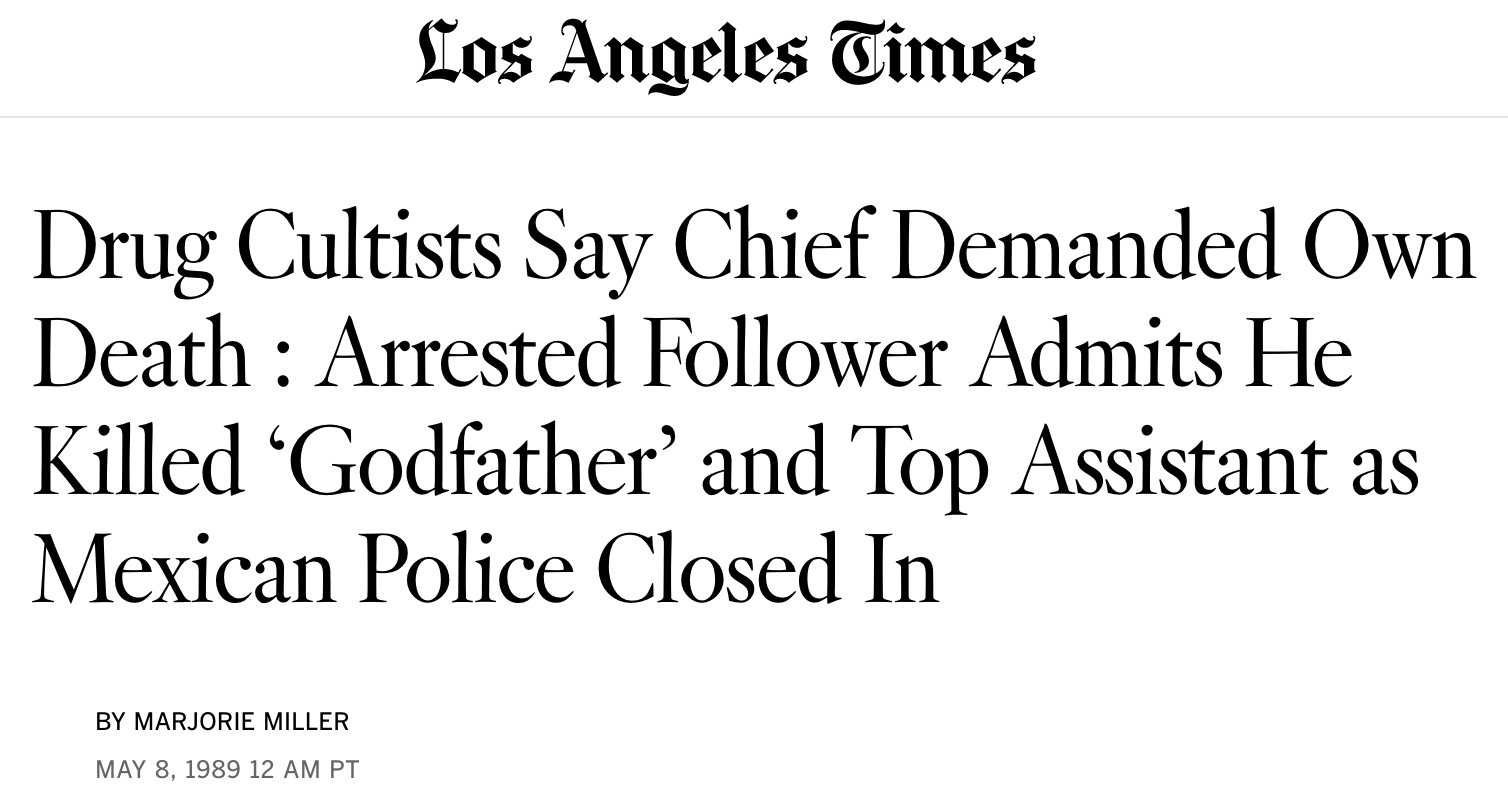
Unfortunately for Constanzo, his account of what happened will never be known because when police eventually tracked him down to an apartment in CDMX on 6 May 1989, he was killed with a burst of automatic gunfire supposedly by one of his followers. Police claimed that Álvaro de León Valdés, a follower of Constanzo, confessed that upon seeing the police outside the building, Constanzo became hysterical and suicidal, throwing wads of cash out the window and exclaiming that everything was over. The cops claimed that Constanzo slapped de León Valdés around and ordered him to kill Constanzo, as evidenced in the visible bruising on de León Valdés's face at the press conference held shortly after the raid. Why Constanzo was unwilling to kill himself and made someone else do it is unclear.
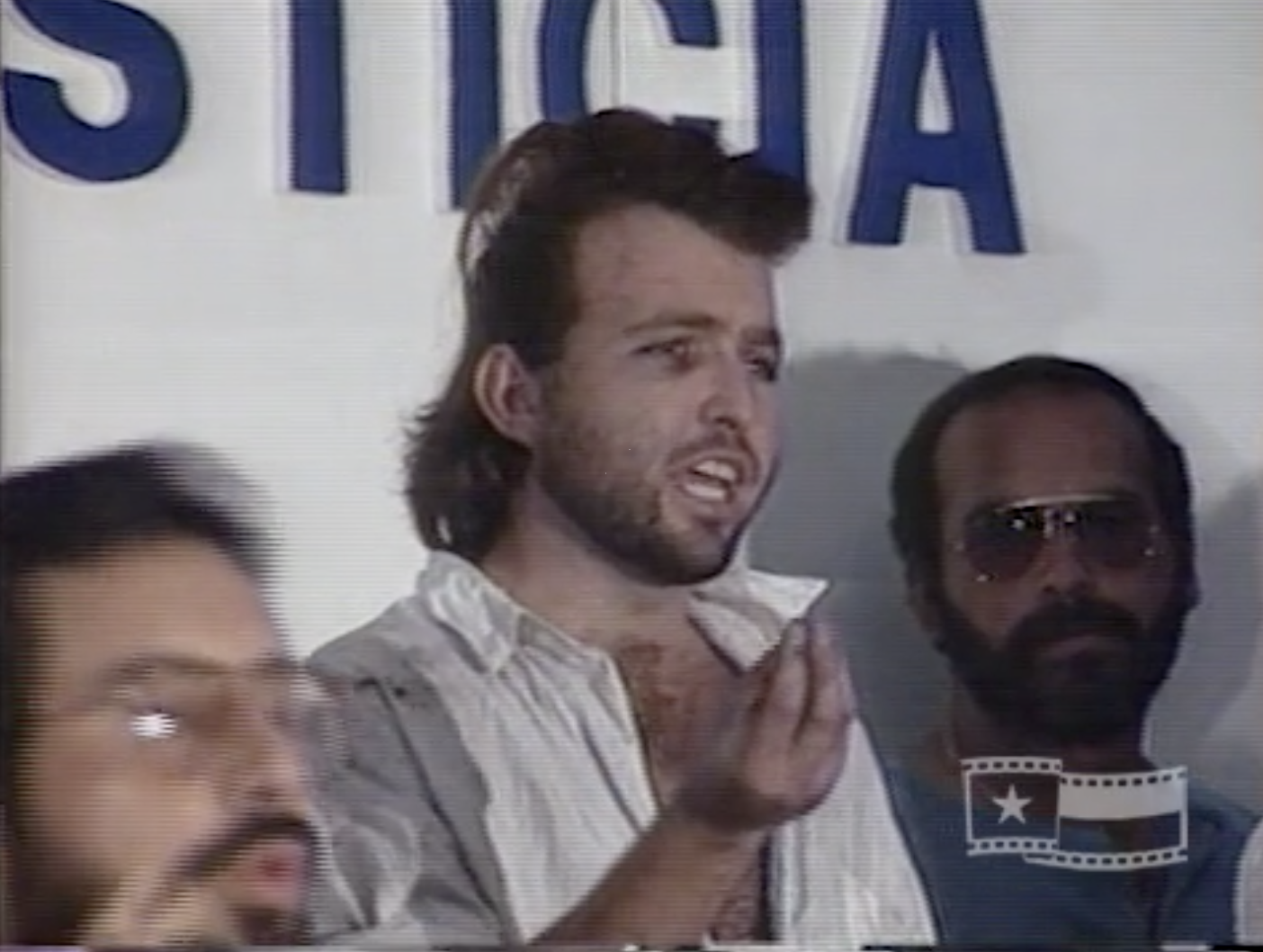
After Constanzo was killed, Reuters reported that there was suspicion that the cult leader may have faked his own death. An unnamed DEA official told the reporter that the bodies were too badly mutilated by gunshot wounds to be positively identified and said he suspected a "twist" in a case hardly wanting for them.
Nevertheless, pictures of the bloodied bodies purportedly of Adolfo Constanzo and a follower killed on Constanzo's orders by another follower and definitely not police were leaked eventually. Curiously, the bodies appeared to be anything but mutilated beyond the point of recognition.
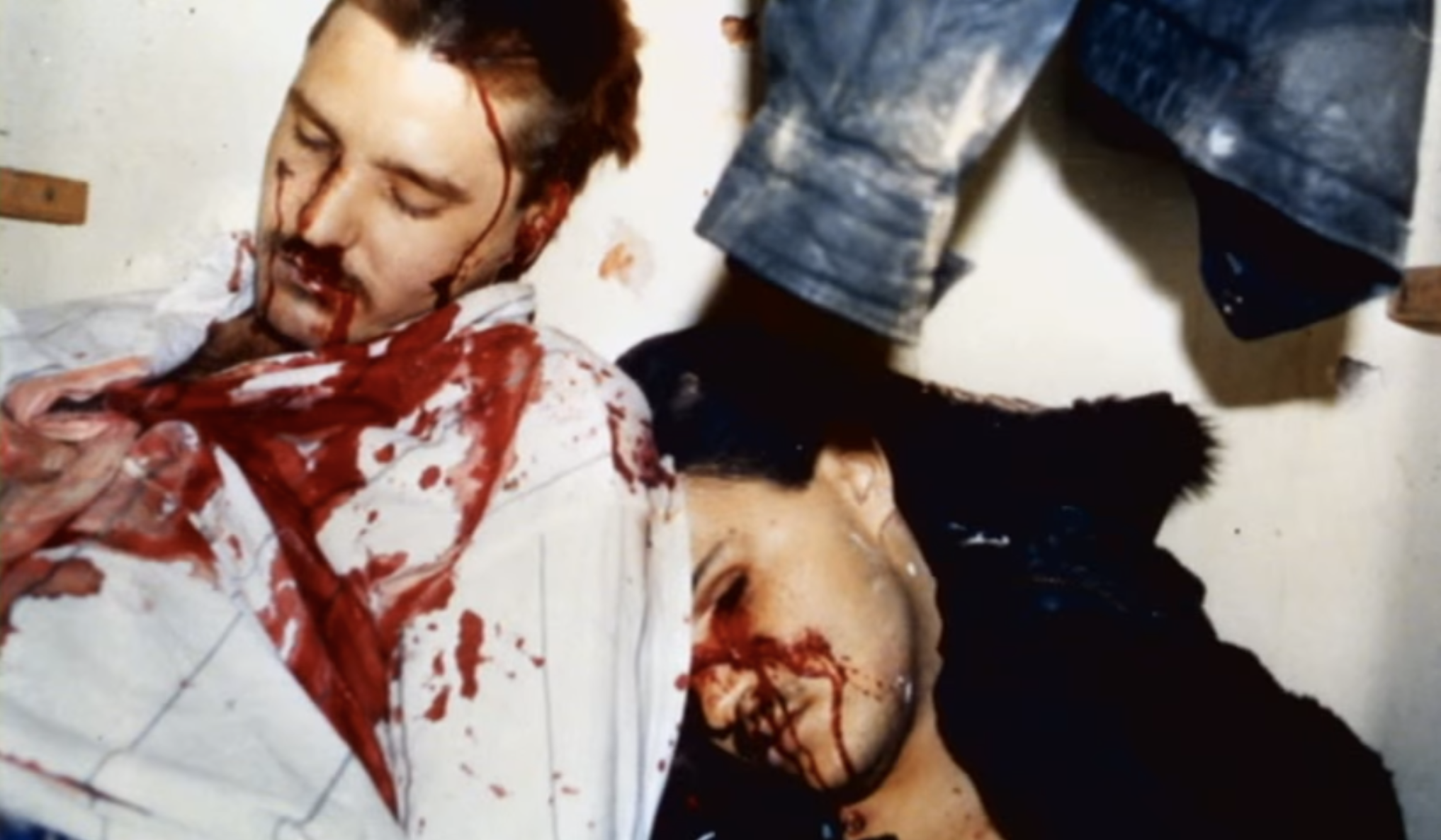
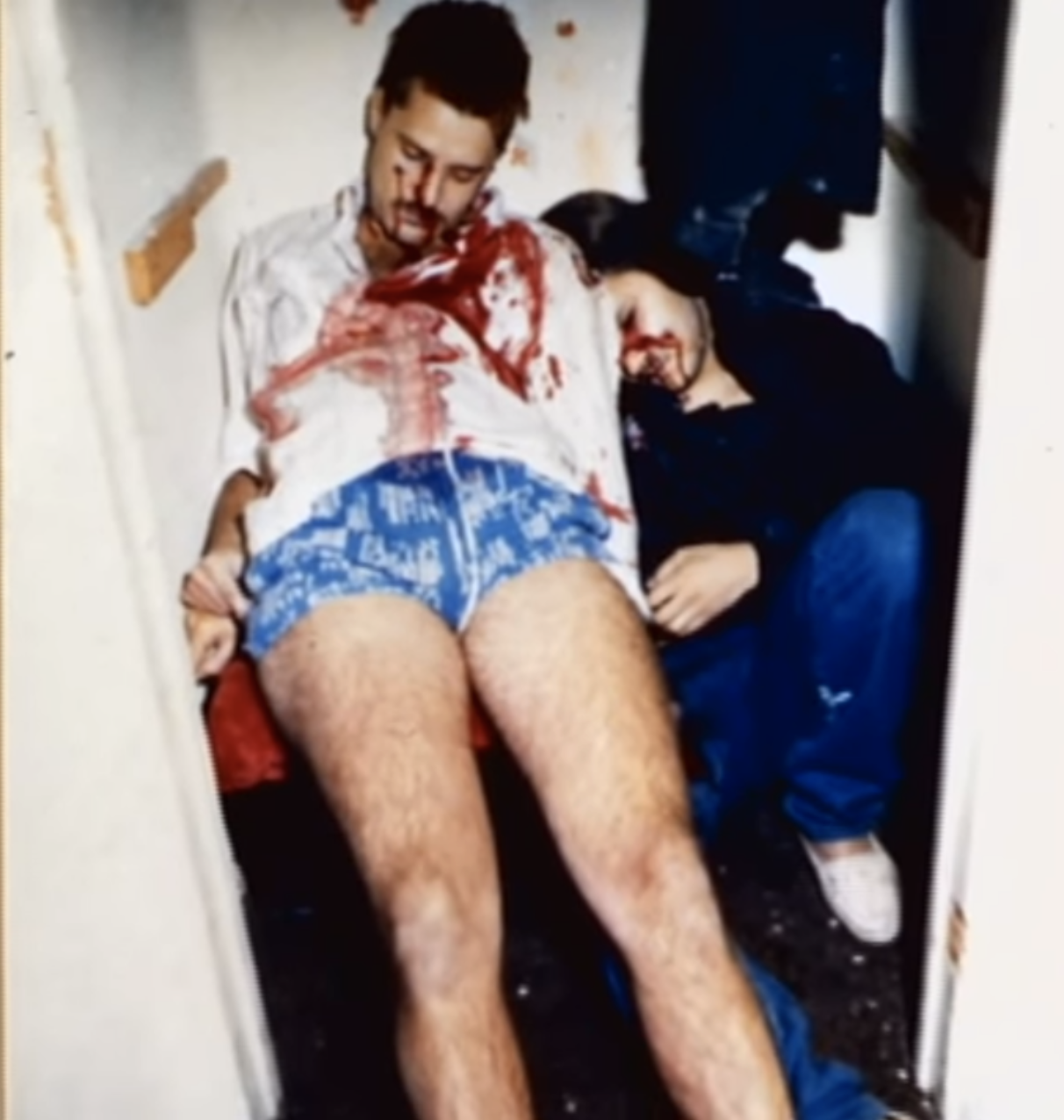
What exactly happened to Mark Kilroy is just one of the mysteries folded into one of the most bizarre and incredible stories of the last 32 years in Mexico. One of the only things that is certain is that there were 15 bodies buried at Rancho Santa Elena. Who put them there and why is based almost entirely on unreliable confessions extracted through torture. It's certain that Mark's life was cut tragically short and he surely didn't do anything to deserve what happened to him, but why he was taken and killed remains unresolved. The true culprits, their motives and the involvement of the people charged may never be fully known because of the sloppy, dishonest investigation.
Álvaro de León Valdés was sentenced to 30 years for allegedly murdering Constanzo and another cult member. Serafín Hernandez and his uncle Elio were sentenced to 67 years for their involvement, along with several of the cultists and a neighbor who lived next to the property, although several have had their sentences reduced to 50 years. Sara Aldrete was sentenced to 62 years in 1994. She maintains her innocence to this day.
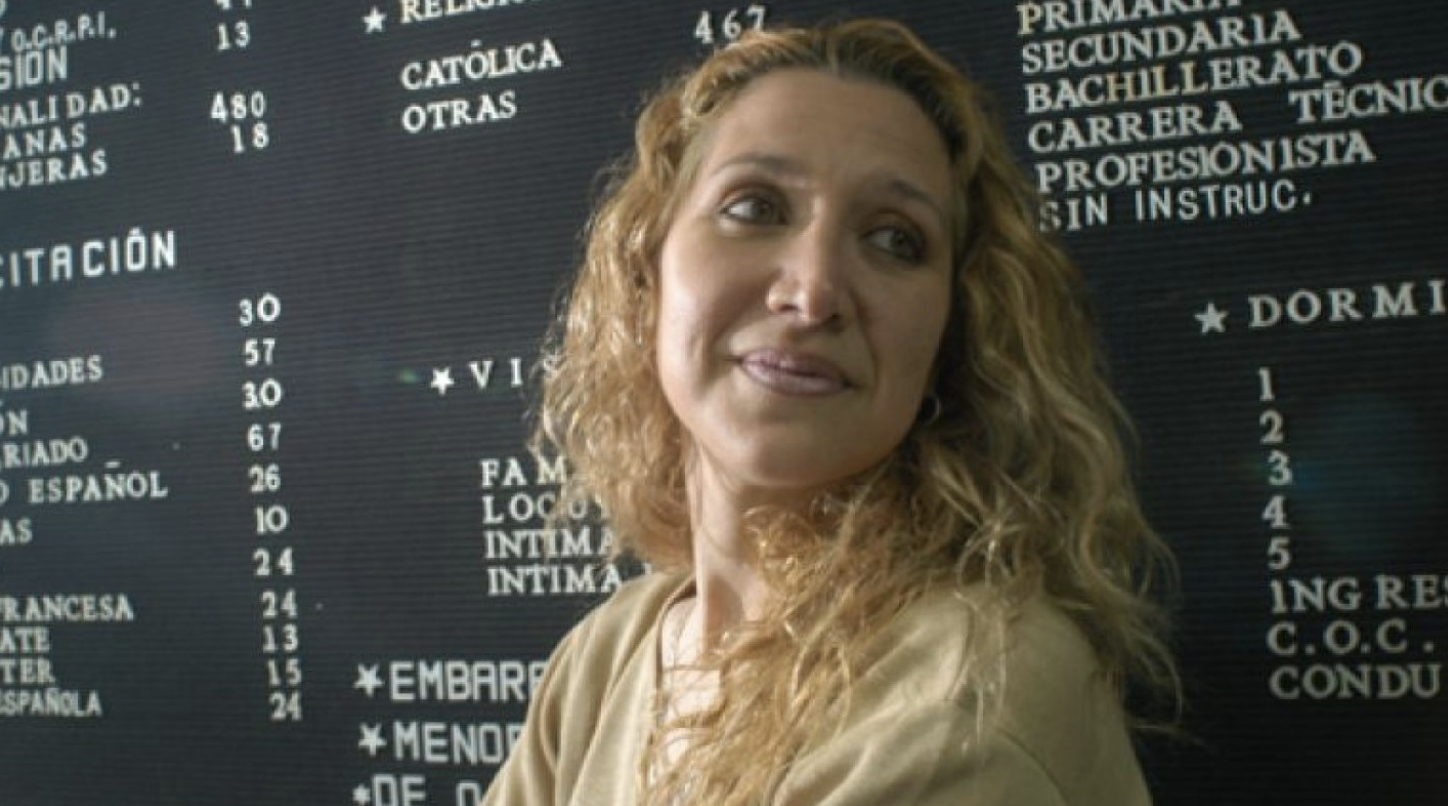
With the attention brought to the case by influential Texas politicos and the media coverage, Mark's family was determined to use their son's death to teach others about the dangers of drugs. The Kilroys created a foundation in Mark's name to advocate for drug control policies like "mandatory sentences for drug users, using abandoned military bases for drug sellers, and an all-out assault by the federal government" as well as focusing on prevention efforts like 'Just Say No.'

The bizarre story lives on in the 'true crime' genre of dozens of the same uncritical retread on podcasts and niche cable channels.

The story is just too irresistible. A white spring breaker whose moral trespass of debauchery made him vulnerable to lurking evil. The unsuspecting victim's fate as a human sacrifice for an exotic cult perverted by drugs and their lust for power affirms the need for state violence to protect the sheep from the wolves.
Never mind that the police have always been the wolves.
